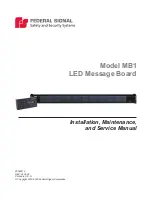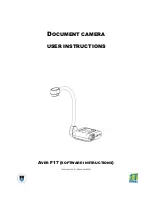
SVS-VISTEK
Feature description
48
Exposure stop
Exposure stop related to interval Start
Strobe start
Strobe delay after interval start
Strobe stop
Strobe stop related to interval Start
PWM frequency
Basic duty cycle ( 1 / Hz ) for PWM
PWM change
Demodulation results
In the current GenICam implementation, all values have to be entered in
tic values.
1 tic = 15 ns
Every adjustment (times, frequencies) has to be recalculated into tics and
done in tics. See the example below.
When setting “Exposure Start” and “Stop” consider ‘read-out-time’ of the
sensor. It has to be within the Sequencer interval.
For physical input and output connections refer to pinout or specifications
or see example below. After trigger signal all programmed intervals will
start. Up to 16 intervals can be programmed.
Sequencer settings can be saved to camera EEPROM.
Example
For demonstration, imagine following task to be done:
Scenario
An object should be inspected with a monochrome camera. For
accentuating different aspects of the image, 4 images should be taken in
a row with 4 different colours of light: Red, Green, Blue, White. White
light should be generated from the RGB lights being activated at the same
time. Basis is a dark environment without other light sources.
Camera wiring
-
3 LED lights are physically connected to the camera on out 0-2
(red, green, blue)
-
Out 3 is not used
I/O matrix
-
4 images to be taken (RGBW) result in 4 sequences
-
RGB PWM change with different intensities (duty cycle) taking
care for differences in spectral response of the camera sensor
-
PWM change 0-2 is connected to out 0-2
-
Seq pulse A is driving the exposure (trigger)
-
Seq pulse B is driving the strobe
-
Seq pulse B in WHITE sequence is reduced down to 33% as light
intensities of 3 lights (RGB) will add up
Notes
-
Different exposure / strobe timings are used for illustration. In
most cases they will show values same as exposure
-
The resulting exposure time shows the period of sensor light
exposure. (‘’masking’’ of exposure time by creating strobe light
impulses shorter than exposure time). This value is not adjustable
at the camera
-
PWM change is shown with reduced height for demonstrating
reduced intensity. In reality though, PWM change will be full
Summary of Contents for ECO Series
Page 5: ...SVS VISTEK Safety Messages Contents of Camera Set 5 ...
Page 94: ...SVS VISTEK Dimensions 94 ...
Page 96: ...SVS VISTEK Dimensions 96 ...
Page 97: ...SVS VISTEK Dimensions 97 ...
Page 98: ...SVS VISTEK Dimensions 98 ...
















































